#buryat language
Text
you know i must have been bone-tired when this part of the herb brides lore didn't come to my mind when i discussed how the Kin fundamentally differs from the cultures it is inspired by um There Is The Human Sacrifice part. like it's an important part of pathologic 2 that you are doing human, or anthropomorphic (if you want to see the Herb Brides as closer to spirits, which comes with its own set of problematics regarding how to approach their oppression) sacrifice. it's an important part of pathologic 2 that you kill a woman, as part of the journey and in direct resonance with you ritualistically killing cattle earlier, and she offers herself to you with cultural and religious significance.
human sacrifices have been done across the globe for millennia, but i cannot, for the life of me, find any source at all that mentions the Buryats (since that was the discussion point) partaking in human sacrifices by the turn of the 19th-early 20th century (or even anything past the 16th). every single source mentioning offerings and sacrifices i've read mentions animals, things such as milk and vodka, and often both at once. would love to read anything about these rituals if papers exist, but i'm personally drawing a blank.
the Kin has Obvious and very Visible influences but it also differs from specific (in this discussion's case, the Buryats) or wider (here, turkic/mongolic as a whole) cultures from the area by so many pieces, big and small, that i wouldn't have enough appendages on my whole body to count them all. and sister. i have plenty of appendages.
#i AM reading a paper that mentions the human sacrifices at Mongol burials where people (typically servants or family) would be sacrificed#to accompany the dead; as well as the Shor practice of sacrificing women/girls (replaced apparently quickly by sacrificing ducks)#but those seem pretty old [the Mongol part mentions the 13th century] & like. nothing about the buryats in that time period#i'm like 85% sure i saw in the beginning of being into patho someone saying how equating the Kin; who practice human sacrifices [& others]#to correlate/be meant to represent Real Life ethnicities is insulting because They Don't Do That.#and like. everythingggg that touches upon representation/appreciation/appropriation/theft is subjective and#informed my how much leeway you're willing to give the creators so that's like#bro i'm just reading PDFs#also just found out the discussion of ''The Kin Is Obviously Inspired But Not Meant To Represent [x]'' is over 2yrs old. we're still at it.#as anon said. ''unless you're tolkien; coming up with a whole fictional language is hard''.#anyways appendage time. stuff that differs just out of the top of my head:#everything relating to the religion which is almost a complete inverse of buryat tengrist/shamanic faith + don't get me started on buddhism#the clothes. the homes. the creation myths; beyond the apparition of Clay; which is present in so many cultures on earth#no swan ancestor. no lake worship. no sky/heavens. no tens of named hierarchical deities. NO BURBOT! no hats. no hats (burts into tears)#NO HORSES? ON THE EURASIAN STEPPE?#the belief that earth mustn't be cut is so buryat. i'm sure i've read it. no idea if it is also in other mongolic peoples but buryat it is.#also a bull-ancestor/bull totem. that exists in buryat tribes; but they also have a bunchhhhh of other sacred animals (including. swans.#also horses. there's this [charm?] made out of horse hair there is)#neigh (blabbers)#i'm realizin how crazy i sound repeating shit that has been said 2yrs ago but like someone already mentioned the human sacrifice.#someone already mentioned the clothes. someone already mentioned the yurts/gers. someone already mentioned the religion#like i'm just. repeating stuff. and yet. give it up for year 2
20 notes
·
View notes
Text
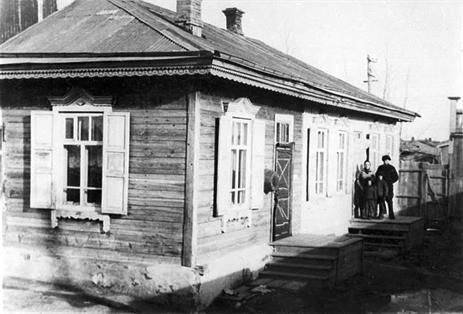
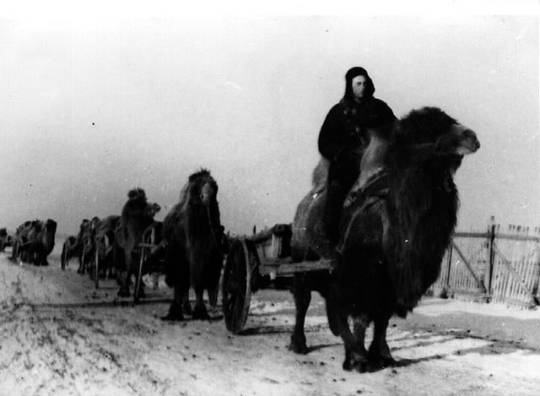
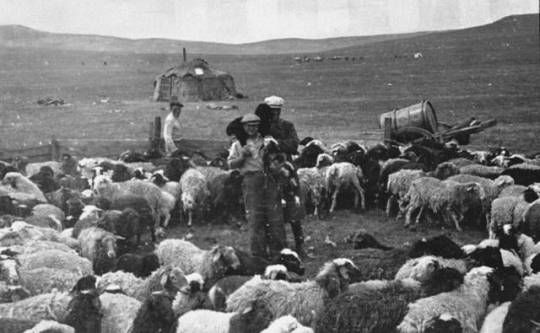


The Litvin family - Jewish farmers from Hailar, Manchuria, Chinese Inner Mongolia region
The Litvin family was originally from Irkutsk, Siberia. Life for Jews became increasingly harder there during WWI, so the family moved to Inner Mongolia where the existence of the Chinese Eastern Railway made the pastoral area promising.
The family patriarch, Simeon Litvin, was a very skilled farmer. He could accurately determine the age of a horse by its teeth and learned to speak the Mongolian and Tungus languages when communicating with Buryat and Tungus people. So when the family settled in the small town of Hailar on the CER, Simeon quickly made himself at home and gained friends among his suppliers, while still observing Jewish holidays, not working on Saturdays and regularly visiting the Hailar synagogue.
The situation changed dramatically when the Japanese occupied Manchuria in the early 1930s and established the puppet state of Manchukuo, after the Soviet Union sold its part of the railroad to the them. Japanese troops and police became increasingly aggressive, attacking, insulting, and even raping private citizens. They ruthlessly beheaded captives without trials and put their heads on public display. Chaim Litvin, the son of Simeon, had to endure brutal torture and years of imprisonment in a labor camp. After the prison was liberated, Chaim hurried home to Harbin, covering 700 kilometers in only three days. There, he began to breed cattle, got married and built a large farm together with his wife. Chaim worked until in 1959, in the People’s Republic of China, everything was confiscated. With the threat of being arrested by the Communist regime, he went with his family to Israel in 1962.
160 notes
·
View notes
Note
Hello! How do you think Buryatia would be like?


Thank you @irithnova for letting me borrow her Buryatia OC!! GOSH it took me a couple of rounds of drawing and doodling before I finally felt like I had gotten his features down right LOL...
To people who don't know him well, he comes across as friendly, warm, and sociable. He is reliant on tourism after all...
His public face hides some unusual hobbies and tendencies 🤨
Goes out of his way to avoid pissing off russia 🗿
Bugs Tuva to join him at the Inner Asian meetups
Streams online 🎮
BONUS:

Buryatia has a close relationship with Soyotia, who are a Turkic people who've traditionally made their living herding reindeer rather than yak herders like a lot of Buryats. Due to their long history together (as well as Russian imperial and Soviet ethnic minority policies), a lot of Soyots have intermarried with Buryats and have been heavily influenced by Buryat culture, so much so that Soyot culture and language itself is at risk of dying out.
Buryatia treats Soyotia as one of the few people he can let go of his "outside face" around, and holds the philosophy of "we're basically the same, so we can count on each other 😊" towards Soyotia...
#hetalia#ask#haehaie#hws buryatia#hws soyotia#historically inaccurate hair is historically inaccurate#???? ill take ship name suggestions#bursoy#aph haehaie#aph buryatia#hetalia ocs
85 notes
·
View notes
Text
we’re doing pathologic musicology again. everybody shut up. i’m sick of writing about bel canto musical traditions and my jstor subscription dies tomorrow i think. so i’m pre-emptively saving pdfs about ethnomusicology.
interesting side effect of the town’s culture being mostly built around cattle rather than horses is that the soundtrack of p2 in particular has essentially ended up creating an entire musical history and lexicon that is identifiably SIMILAR to that of The Area Near The Baikal Rift Valley while being obviously different.
classic’s soundtrack interestingly arrives at a similar point to this with completely different means in that the classic soundtrack is basically just. ‘is it bleeping and blooping? ok sick ship it’, while also borrowing at points quite clearly from the actual musical traditions of the region. which produces the effect in the listener of, basically ‘this should sound... other than how it does? but it makes sense?’
p2′s soundtrack is trying more obviously to do Authenticity in a way that. has historical precedent, certainly (hi borodin). but it is also trying to do that by borrowing from musical traditions that don’t completely mesh with the way that the town’s musical traditions would have developed. because the town-on-gorkhon is very fond of bulls, culturally speaking, and not horses.
a lot of the extant classical music from the area where pathologic is (presumably) set is not only literally About Horses, which are culturally important, but musically refer to the various gaits of The Horse. (this example is in tuvan but it is not only about horses but the 2/4 rhythm is Trotting-Like. buryat music uses similar music and the same scale, and many of the same instruments, as tuvan music.)
this is not something that bulls particularly have, and so while bulls occupy an equivalent cultural position in the town-on-gorkhon this obviously necessitates a completely different musical tradition. which is also one that doesn’t really exist in the real world, but for which vasily kashnikov and theodor bastard have pulled from existing traditions. they have, however, also created an entire musical language that feels like a place’s musical language essentially out of whole-cloth.
the way that they have done this is essentially to take something about the culturally important animal (lowing, for the bulls -- similarly to how actual tuvan, mongolian, baikal, and yakut music refers to horses’ gaits). and then to use that as a basis for the musical ‘world’ of the game, in a similar way to how extant music uses horses. it’s most obviously used in ‘song to boddho’ but a lot of the music in p2 makes a lot of use of drone which could quite easily be interpreted as The Sound That The Local Culturally Important Beast Makes.
(also the p2 soundtrack has a passacaglia in it. this isn’t relevant to this conversation in any way but it’s neat.)
227 notes
·
View notes
Text
Pathologic and the Town's Russianness: 1
For part 1, let's explore the naming conventions Pathologic uses, and whether its Town characters have Russian surnames.
The names of the townsfolk are remarkably non-Russian
The Kin, of course, have their names in their own Steppe language, which is a conlang that Ice Pick Lodge conscructed based on Mongolic and Turkic (mostly Buryat) tongues. So, no questions with that.
But what about the Town itself, and the names of the people living in it?
For starters, it must be noted that the foundational workings of surnames in Russian are pretty much the same as in most European languages: a surname denotes someone's ancestor's relation to craft (such as the most common surname both in English - Smith, and in Russian - Kuznetsov, meaning exactly the same), kin, appearance feature, or other such concept.
As an inflected language, however, Russian adds special suffixes to its usual roots to arrive at surnames. The most well-known of them is, of course, -ov. In the example above it turns kuznets (smith, as an occupation) into Kuznetsov (Smith, as a surname). It is also used to form the archetypical Russian surname: Ivanov, that is, related to Ivan. It is, however, by far not the only suffix used, and there are multiple others: -in, -tsyn, -shyn, -ev, -tsev, -y, and more.
Most of these allow to construct feminine forms by simple addition of the ending -a (Saburov - Saburova); but some are more complex (Olgimsky - Olgimskaya). Such complexity usually marks suffixes used in other Slavic tongues: -y in particular is often seen in Belorussian and Polish.
With all that in mind, let's explore the names we find in the Town-on-Gokhon. And the thing immediately striking is just how little surnames formed from Russian roots and Russian suffixes there are.
First, there are obviously non-Russian surnames, such as Ravel, Block, Longin, Feugel, Yan, Croy. Most of them appear to come from other European languages.
Is that probable for a Russian Empire stand-in? Yes. It was a multinational state, and there were enough Europeans among the elite for Vyazemsky to bemoan in mid-XIX century that "the Russian God" is "God whose favour falls on Germans". (Then again, hardly surprising under the Holstein-Gottorp-Romanov dynasty, ethnically German and only taking German wives for generations, despite ruling Russia).
Then, there are the surnames with Russian suffixes: Saburov, Stamatin, Lyuricheva, Olgymsky, Dankovsky. But the thing is, none of these have Russian roots! Saburov is based on Tatar (patient, hardy); Stamatin on Greek (persistent, stable); Lyuricheva, Olgymsky and Dankovsky are Slavic-sounding, but appear to be unique to the game's characters. As a side note here, Dankovsky is apparently based on a name from Gorky's Old Izergiel (Danko, a brave who ripped his own heart out to light the way for the rest of his peope).
Now, is that probable? It's stretching the suspension of disbelief a bit. Yes, there had been Tatars among the Russian elite since before the day Kazan was conquered by Moscow, which reflected in their surnames. Yes, priesthood surnames could include Greek roots. And yes, the Western Slavs were also in the Empire. But it's hard to imagine all of these coinciding to entirely drown out the surnames based on Russian roots!
All in all, this distribution sounds like a conscious artistic choice, making such an assemblage less likely for historic Eastern Europe rather than Central one.
As a sort of postscript, for these who could be bothered to read this far down. There's an interesting quirk about the female surnames in the game: in Russian, unless a surname ends with one of the Russian suffixes, it retains its basic form (same as the masculine) even when women use it. Thus, Lara's surname is Ravel, same as her father's; same thing with Croy. But there's a curious exception: the Kains. Their surname is obviously based on the eponymous Biblical character, Cain. The only thing is, Cain is not a Russian word, and thus the women of the family should apparently still have the surname Kain. Yet they do not, they use Kaina - which suggests that their surname uses the Russian suffix -in: just someone related to something called Ka-, perfectly normal, totally a word, no primordial killers in sight.
Whether that is simple wordplay, a way to show the lineage deeply assimilated, a way to take the focus off the Biblical relation, or anything else, is up to the reader to decide.
31 notes
·
View notes
Text
Additional letters
This is a compilation of additional letters in the main scripts of the world.
Arabic script
The basic Arabic abjad has 28 letters: ح ج ث ت ب ا ص ش س ز ر ذ د ق ف غ ع ظ ط ض ي و ه ن م ل ك. Some languages have adapted it by including additional letters:
پ: Arabic, Balochi, Kashmiri, Khowar, Kurdish, Pashto, Persian, Punjabi, Sindhi, Urdu, Uyghur
ٻ: Saraiki, Sindhi
ڀ: Sindhi
ٺ: Sindhi
ٽ: Sindhi
ٿ: Rajasthani, Sindhi
ﭦ: Kashmiri, Punjabi, Urdu
ټ: Pashto
چ: Kashmiri, Kurdish, Pashto, Persian, Punjabi, Urdu
څ: Pashto
ځ: Pashto
ڊ: Saraiki
ډ: Pashto
ڌ: Sindhi
ڈ: Kashmiri, Punjabi, Urdu
ݙ: Saraiki
ڕ: Kurdish
ړ: Ormuri, Torwali
ژ: Kurdish, Pashto, Persian, Punjabi, Urdu, Uyghur
ڑ: Punjabi, Urdu
ږ: Pashto
ݭ: Gawri, Ormuri
ݜ: Shina
ښ: Pashto
ڜ: Moroccan Arabic
ڠ: Malay
ڥ : Algerian Arabic, Tunisian Arabic
ڤ: Kurdish, Malay
ڨ: Algerian Arabic, Tunisian Arabic
ک: Sindhi
ݢ: Malay
گ: Pashto, Kurdish, Kyrgyz, Mesopotamian Arabic, Persian, Punjabi, Urdu, Uyghur
ګ: Pashto
ڱ: Sindhi
ڳ: Saraiki, Sindhi
ڪ: Sindhi
ڬ: Malay
ڭ: Algerian Arabic, Kyrgyz, Moroccan Arabic, Uyghur
ڵ: Kurdish
لؕ : Punjabi
ݪ: Gawri, Marwari
ڽ: Malay
ڻ: Sindhi
ݨ: Punjabi, Saraiki
ڼ: Pashto
ۏ: Malay
ۋ: Kyrgyz, Uyghur
ۆ: Kurdish, Uyghur
ۇ: Kyrgyz, Uyghur
ۅ: Kyrgyz
ی: Pashto
ې: Pashto, Uyghur
ىٓ: Saraiki
ێ: Kurdish
ۍ: Pashto
ئ: Pashto, Punjabi, Saraiki, Urdu
ھ: Kurdish, Punjabi, Urdu, Uyghur
ے: Punjabi, Urdu
Cyrillic script
The basic Cyrillic alphabet includes 29 letters: А а Б б В в Г г Д д Е е Ж ж З з И �� Й й К к Л л М м Н н О о П п Р р С с Т т У у Ф ф Х х Ц ц Ч ч Ш ш Щ щ Ь ь Ю ю Я я. Most languages use additional letters:
Ӕ ӕ: Ossetian
Ä ӓ: Hill Mari, Kildin Sámi
Ӑ ӑ: Chuvash
Ґ ґ: Belarusian, Rusyn, Ukrainian
Ӷ ӷ: Abkhaz
Ѓ ѓ: Macedonian
Г' г': Kurdish
Гъ гъ: Avar, Ossetian
Гь гь: Avar
Гӏ гӏ: Avar
Ғ ғ: Azerbaijani, Bashkir, Tajik, Uzbek
Дә дә: Abkhaz
Дж дж: Bulgarian, Ossetian
Дз дз: Bulgarian, Ossetian
Ђ ђ: Montenegrin, Serbian
Ѕ ѕ: Macedonian
Ҙ ҙ: Bashkir
Є є: Rusyn, Ukrainian
Ә ә: Abkhaz, Azerbaijani, Bashkir, Dungan, Kalmyk, Kurdish, Tatar
Ә' ә': Kurdish
Ё ё: Azerbaijani, Bashkir, Buryat, Chuvash, Dungan, Hill Mari, Khalkha, Kildin Sámi, Komi-Permyak, Kyrgyz, Meadow Mari, Ossetian, Russian, Rusyn, Tajik, Tatar, Ukrainian, Uzbek
Ӗ ӗ: Chuvash
Ӂ ӂ: Moldovan
Җ җ: Dungan, Kalmyk
Жә жә: Abkhaz
З́ з́: Montenegrin
Ӡ ӡ: Abkhaz
Ӡә ӡә: Abkhaz
І і: Avar, Belarusian, Rusyn, Ukrainian
Ї ї: Rusyn, Ukrainian
Ӣ ӣ: Tajik
Ҋ ҋ: Kildin Sámi
Ј ј: Azerbaijani, Kildin Sámi, Macedonian, Montenegrin, Serbian
Ҝ ҝ: Azerbaijani
Қ қ: Abkhaz, Tajik, Uzbek
Қь қь: Abkhaz
Ҡ ҡ: Bashkir
Ҟ ҟ: Abkhaz
Ҟь ҟь: Abkhaz
Ќ ќ: Macedonian
К' к': Kurdish
Къ къ: Avar, Ossetian
Кь кь: Abkhaz, Avar
Кӏ кӏ: Avar
Кӏкӏ кӏкӏ: Avar
Кк кк: Avar
Ӆ ӆ: Kildin Sámi
Љ љ: Macedonian, Montenegrin, Serbian
Ӎ ӎ: Kildin Sámi
Ӊ ң: Bashkir, Dungan, Kalmyk, Kildin Sámi, Kyrgyz, Tatar
Ҥ ҥ: Meadow Mari
Ӈ ӈ: Kildin Sámi
Њ њ: Macedonian, Montenegrin, Serbian
Ө ө: Azerbaijani, Bashkir, Buryat, Kalmyk, Khalkha, Kyrgyz, Tatar
Ö ӧ: Hill Mari, Komi-Permyak, Kurdish, Meadow Mari
Ԥ ԥ: Abkhaz
П' п': Kurdish
Ҧ ҧ: Abkhaz
Пъ пъ: Ossetian
Ҏ ҏ: Kildin Sámi
Р' р': Kurdish
Ҫ ҫ: Bashkir, Chuvash
С́ с́: Montenegrin
Ҭ ҭ: Abkhaz
Ҭә ҭә: Abkhaz
Т' т': Kurdish
Тә тә: Abkhaz
Тъ тъ: Ossetian
Тӏ тӏ: Avar
Ћ ћ: Montenegrin, Serbian
Ӱ ӱ: Hill Mari, Meadow Mari
Ӳ ӳ: Chuvash
Ў ў: Belarusian, Dungan, Uzbek
Ӯ ӯ: Tajik
Ү ү: Azerbaijani, Bashkir, Buryat, Dungan, Kalmyk, Khalkha, Kyrgyz, Tatar
Ҳ ҳ: Abkhaz, Tajik, Uzbek
Хъ хъ: Ossetian
Хь хь: Abkhaz
Хӏ хӏ: Avar
Ҳ ҳ: Abkhaz
Ҳә ҳә: Abkhaz
Һ һ: Azerbaijani, Bashkir, Buryat, Kalmyk, Kildin Sámi, Kurdish, Tatar
Һ' һ': Kurdish
Ҵ ҵ: Abkhaz
Ҵә ҵә: Abkhaz
Цә цә: Abkhaz
Цъ цъ: Ossetian
Цц цц: Avar
Цӏ цӏ: Avar
Цӏцӏ цӏц: Avar
Џ џ: Abkhaz, Macedonian, Montenegrin, Serbian
Џь џь: Abkhaz
Ҹ ҹ: Azerbaijani
Ҷ ҷ: Azerbaijani, Tajik
Ч' ч': Kurdish
Чъ чъ: Ossetian
Чӏ чӏ: Avar
Чӏчӏ чӏчӏ: Avar
Ҽ ҽ: Abkhaz
Ҿ ҿ: Abkhaz
Шь шь: Abkhaz
Шә шә: Abkhaz
’: Belarusian, Ukrainian
Ъ ъ: Azerbaijani, Bashkir, Chuvash, Dungan, Hill Mari, Khalkha, Komi-Permyak, Meadow Mari, Ossetian, Russian, Rusyn, Tajik, Tatar, Uzbek
Ҍ ҍ: Kildin Sámi
Ы ы: Abkhaz, Azerbaijani, Bashkir, Belarusian, Buryat, Chuvash, Dungan, Hill Mari, Khalkha, Kildin Sámi, Komi-Permyak, Kyrgyz, Meadow Mari, Moldovan, Ossetian, Russian, Tatar
Ӹ ӹ: Hill Mari
Ҩ ҩ: Abkhaz
Э э: Azerbaijani, Bashkir, Belarusian, Buryat, Chuvash, Dungan, Hill Mari, Kalmyk, Khalkha, Kildin Sámi, Komi-Permyak, Kyrgyz, Kurdish, Meadow Mari, Moldovan, Ossetian, Russian, Tajik, Tatar, Uzbek
Ӭ ӭ: Kildin Sámi
Ԛ ԛ: Kurdish
Ԝ ԝ: Kurdish
Devanagari script
The basic Devanagari abugida includes 48 letters: अ आ इ ई उ ऊ ऋ ए पॅ ऐ ओ औ अं अः ॲं क ख ग घ ङ ह च छ ज झ ञ य श ट ठ ड ढ ण र ष त थ द ध न ल स प फ ब भ म व. But some languages add additional ones:
ॠ: Sanskrit
ऌ: Sanskrit
ॡ: Sanskrit
ॲ: Marathi
ऑ: Marathi
क़: Hindi
ख़: Hindi
ग़: Hindi
ॻ: Saraiki, Sindhi
ज़: Hindi
ॼ: Saraiki, Sindhi
झ़: Hindi
ॾ: Saraiki, Sindhi
फ़: Hindi
ड़: Hindi
ढ़: Hindi
ॿ: Saraiki, Sindhi
ळ: Gharwali, Konkani, Marathi, Rajasthani, Sanskrit
ॸ: Marwari
Geʽez script
The basic Geʽez abugida consists of 217 letters: ሀ ሁ ሂ ሃ ሄ ህ ሆ ለ ሉ ሊ ላ ሌ ል ሎ ሏ ሐ ሑ ሒ ሓ ሔ ሕ ሖ ሗ መ ሙ ሚ ማ ሜ ም ሞ ሟ ፙ ሠ ሡ ሢ ሣ ሤ ሥ ሦ ሧ ረ ሩ ሪ ራ ሬ ር ሮ ሯ ፘ ሰ ሱ ሲ ሳ ሴ ስ ሶ ሸ ሹ ሺ ሻ ሼ ሽ ሾ ሷ ቀ ቁ ቂ ቃ ቄ ቅ ቆ ቋ በ ቡ ቢ ባ ቤ ብ ቦ ቧ ተ ቱ ቲ ታ ቴ ት ቶ ቷ ቸ ቹ ቺ ቻ ቼ ች ቾ ኀ ኁ ኂ ኃ ኄ ኅ ኆ ኋ ነ ኑ ኒ ና ኔ ን ኖ ኗ አ ኡ ኢ ኣ ኤ እ ኦ ኧ ከ ኩ ኪ ካ ኬ ክ ኮ ኳ ወ ዉ ዊ ዋ ዌ ው ዎ ዐ ዑ ዒ ዓ ዔ ዕ ዖ ዘ ዙ ዚ ዛ ዜ ዝ ዞ ዟ የ ዩ ዪ ያ ዬ ይ ዮ ደ ዱ ዲ ዳ ዴ ድ ዶ ዷ ገ ጉ ጊ ጋ ጌ ግ ጎ ጓ ጠ ጡ ጢ ጣ ጤ ጥ ጦ ጧ ጰ ጱ ጲ ጳ ጴ ጵ ጶ ጷ ጸ ጹ ጺ ጻ ጼ ጽ ጾ ጿ ፀ ፁ ፂ ፃ ፄ ፅ ፆ ፈ ፉ ፊ ፋ ፌ ፍ ፎ ፏ ፚ ፐ ፑ ፒ ፓ ፔ ፕ ፖ ፗ. Certain languages use additional letters:
ቈ ቊ ቋ ቌ ቍ: Amharic, Bilen, Tigrinya
ኈ ኊ ኋ ኌ ኍ: Amharic, Bilen
ኰ ኲ ኳ ኴ ኵ: Amharic, Bilen, Tigrinya
ጐ ጒ ጓ ጔ ጕ: Amharic, Bilen, Tigrinya
ቐ ቑ ቒ ቓ ቔ ቕ ቖ: Amharic, Bilen, Harari, Tigre, Tigrinya
ቘ ቚ ቛ ቜ ቝ: Tigrinya
ቨ ቩ ቪ ቫ ቬ ቭ ቮ: Amharic, Bilen, Harari, Tigrinya
ⶓ ⶔ ጟ ⶕ ⶖ: Bilen
ኘ ኙ ኚ ኛ ኜ ኝ ኞ: Amharic, Bilen, Harari, Tigrinya
ኸ ኹ ኺ ኻ ኼ ኽ ኾ: Amharic, Harari, Tigrinya
ዀ ዂ ዃ ዄ ዅ: Amharic, Bilen, Tigrinya
ዠ ዡ ዢ ዣ ዤ ዥ ዦ: Amharic, Bilen, Tigre, Tigrinya
ጀ ጁ ጂ ጃ ጄ ጅ ጆ: Amharic, Bilen, Harari, Tigrinya
ጘ ጙ ጚ ጛ ጜ ጝ ጞ: Bilen, Tigre
ጨ ጩ ጪ ጫ ጬ ጭ ጮ: Amharic, Bilen, Harari, Tigrinya
Hebrew script
The basic Hebrew abjad has 22 letters: א ב ג ד ה ו ז ח ט י ך/כ ל ם/מ ן/נ ס ע ף/פ ץ/צ ק ר ש ת. Yiddish adds two more:
וו וי יי: Yiddish
בֿ: Yiddish
Latin script
The basic Latin alphabet consists of 26 letters: A a B b C c D d E e F f G g H h I i J j K k L l M m N n O o P p Q q R r S s T t U u V v W w X x Y y Z z. Many languages add special characters:
Countries between parentheses are added to distinguish between different languages that have the same name.
Æ æ: Danish, English, Faroese, Icelandic, Kawésqar, Lule Sámi, Norwegian, Southern Sámi, Yaghan
Ɑ ɑ (Latin alpha): Duka, Fe’fe’, Mbembe, Mbo, Tigon
Ð ð (eth): Anii, Elfdalian, Faroese, Icelandic
Ǝ ǝ (turned E): Anii, Bangolan, Bissa, Bura, Kanuri, Kposo, Lama, Lukpa, Ngizim, Tamahaq, Tamasheq, Turka, Yom
Ə ə (schwa): Awing, Bafut, Bulu, Daba, Dazaga, Dii, Ewondo, Fe’fe’, Gude, Kamwe, Kasena, Kemezung, Kpelle, Lyélé, Mada, Makaa, Manengumba, Mfumte, Mofu-Gudur, Mundang, Mundani, Ngas, Nso, Nuni, Parkwa, Tarok, Teda, Temne, Vengo, Vute, Yom, Zulgo-Gemzek
Ɛ ɛ (Latin epsilon): Abidji, Adele, Adjukru, Aghem, Ahanta, Ait Seghrouchen, Ait Warain, Aja (Benin), Akan, Anii, Anyin, Ayizo, Bafia, Bafut, Baka (Cameroon), Bambara, Baoulé, Bariba, Basa (Cameroon), Beni Snous, Bhele, Bissa, Boko, Busa (Nigeria), Central Atlas Tamazight, Cerma, Chakosi, Dagaare, Dan, Dangme, Dendi, Dii, Dinka, Djerbi, Duala, Dyula, Ewe, Ewondo, Ghomara, Iznasen, Kabyle, Kako, Kemezung, Kenyang, Kposo, Kyode, Lika, Lingala, Lupka, Maasai, Mandi (Cameroon), Manenguba, Mangbetu, Matmata, Mbelime, Medumba, Mzab-Wargla, Nawdm, Ngiemboon, Ngomba, Noni, Nuer, Sanhaja de Srair, Shawiya, Shenwa, Shilha, Tarifit, Tem, Tigon, Turka, Yoruba, Zuwara
Ɣ ɣ (Latin gamma): Air Tamajaq, Dagbani, Dinka, Ewe, Kabiye, Kabyle, Kpelle, Kposo, Lukpa, Tamahaq, Tamasheq, Tawellemet, Wakhi
ɤ (ram’s horn/baby gamma): Dan, Goo
I ı (Dotless): Crimean Tatar, Gagauz, Kazakh, Turkish
Ɪ ɪ (small capital): Kulango, Lomakka
Ɩ ɩ (iota): Bissa, Kabiye
Kʼ ĸ (kra): Inuttitut
Ł ł (L with stroke): Gwich’in, Iñupiaq, Kashubian, Navajo, Polish, Silesian, Sorbian, Venetian
Ŋ ŋ (eng): Aghem, Iñupiaq, Kemezung, Lukpa, Mandi (Cameroon), Medumba, Mundani, Nawdm, Ngiemboon, Ngomba, Noni, Northern Sámi, Nuer, Skolt Sámi, Tem, Tigon, Wuzlam
Ɔ ɔ (open O): Aghem, Akan, Bafia, Baka, Bambara, Baoulé, Bariba, Bassa, Boko, Dii, Dinka, Duala, Dyula, Ewe, Ewondo, Kako, Kemezung, Kposo, Lika, Lingala, Maasai, Mandi (Cameroon), Manenguba, Mangbetu, Mbelime, Medumba, Mundani, Nawdm, Ngiemboon, Ngomba, Nuer, Tem, Tigon, Turka, Yoruba
Œ œ: French, Lombard
Ʀ ʀ (small capital R): Alutiiq
ẞ ß (Eszett): German
Þ þ (thorn): Icelandic
Ɥ ɥ (turned H): Dan
Ʊ ʊ (upsilon): Anii, Anyin, Foodo, Lukpa, Tem, Yom
Ʌ ʌ (turned V): Dan, Ch’ol, Oneida, Temne, Tepehuán, Wounaan
Ʒ ʒ (ezh): Aja, Dagbani, Laz, Skolt Sámi
Ɂ ɂ (glottal stop): Chipewyan, Ditidaht, Dogrib, Halkomelem, Kutenai, Lushootseed, Nuu-chah-nulth, Slavey, Thompson
Ꞌ ꞌ (saltillo): Central Sama, Mexicanero, Mi'kmaq, Nahuatl, Nawat, Rapa Nui, Tlapane
Tibetan script
The basic Tibetan abugida is formed by 34 letters: ཀ ཁ ག ང ཅ ཆ ཇ ཉ ཏ ཐ ད ན པ ཕ བ མ ཙ ཚ ཛ ཝ ཞ ཟ འ ཡ ར ལ ཤ ས ཧ ཨ ཨི ཨུ ཨེ ཨོ. Balti uses four additional characters:
ཫ: Balti
ཬ: Balti
ཁ༹: Balti
ག༹: Balti
#langblr#lingblr#english#hindi#arabic#french#russian#urdu#german#punjabi#marathi#turkish#persian#yoruba#polish#ukrainian#uzbek#sindhi#pashto#saraiki#malay#kurdish#bambara#dyula#azerbaijani#kazakh#hungarian#hebrew#tibetan
64 notes
·
View notes
Text
My bone to pick with shitty hetalia "Siberia" OCs
Spoiler alert, they're all terrible!
Many people who make Siberia ocs often refer to Siberia as a nation. Siberia is not a nation, it is a large geographical area which is the home to many different ethnic groups.
This excuse is often made for singular "native American" ocs too; Using the excuse that because of the Russian conquest of Siberia which resulted in the massacre and displacement of the different peoples of Siberia, this is a justification to put all of these different groups into one, singular, Siberia OC, as apparently, there's no point in doing actual research into the different ethnic groups who are native to Siberia!
This I find to be blatantly disrespectful, conflating such diverse groups into one (often whitewashed as I'll get onto later) singular OC and flippantly saying "oh well a lot of them are dead now so..." is again, disrespectful and insensitive. A Tuvan is not an Evenk is not a Yakut is not a Buryat is not a Chukchi is not a Koryak.
That list I just gave you is just a small example of the sheer diversity of the ethnic groups who are native to Siberia.
It leaves a very bad taste in my mouth when people use the Russian conquest of Siberia - an already sensitive topic because of the displacements and killings of the native people of Siberia which in turn, resulted in an ethnic cleansing, as a vehicle to then create (as I said before, often whitewashed) OCs which dismiss the unique cultures and histories of these different groups. Do people...Not see the irony in this?
Honestly, just 5 minutes of research into the native groups of Siberia would show you that trying to conflate all of these different cultures into one just does not make sense regardless. Though these cultures share similarities because of course they are North East Asian - this is not a justification to waive off the diversity of these ethnic groups!
Let's take Buryats and Yakuts for example, two ethnic groups who live in Siberia and who are considered to be Siberians. Buryats are a Mongolic people, their culture is quite similar to that of Khalkha Mongols, the majority ethnic group in Mongolia. Yakuts on the other hand, are not a Mongolic group.
The Buryats live primarily in the Republic of Buryatia, located in southern Siberia, Russia, while the Yakuts, also known as the Sakha, inhabit the Sakha Republic (Yakutia) in the Russian Far East. Both groups have historically practised nomadic herding, but the Buryats traditionally focused on cattle herding and moved with their herds across the vast steppe, while the Yakuts were known for their reindeer herding and horse breeding in the Arctic and subarctic regions. The Buryats' culture has been heavily influenced by Tibetan Buddhism due to historical connections with Tibet, and shamanism also plays a significant role in their spiritual practices. The Yakuts' culture, in contrast, reflects influences from both Turkic and Siberian indigenous elements, with some Russian cultural assimilation over time.
Geographically speaking, they also differ. Buryatia is characterised by diverse landscapes, including mountains and lakes, while Yakutia is known for its extreme cold temperatures and vast tundra. Despite their differences, both groups have rich cultural heritages and face challenges in preserving their traditions and languages amidst Russian colonisation.
Just between Buryats and Yakuts, you can already see how they differ culturally and linguistically. Of course there will be some similarities as they are both Northern Asian cultures, but we don't give Spain and Portugal a singular personification because of similar characteristics/cultures now, do we?
Another issue I have with Siberia OCs is when, not only (by default) is a Siberia OC blatantly dismissive of the diversity of the ethnic groups who are native to Siberia, but when they make their already insensitive OC... White Russian, or half Russian? Do I even need to explain why this is offensive?
Yes, a majority of people who live in Siberia now are ethnic Russias. Do you ever... wonder why that is though?
What's worse is when people know, but then use the displacement of the people of Siberia as a justification to make their Siberia OC half Russian or white. This is blatant white washing, and though many groups are Russified, this does not mean that they've completely let go of their native culture and or are extinct, nor is it an excuse to ignore their native cultures to make an insensitive oc.
There is a difference in recognising that yes, some of these groups have gone through a process of Russification/have adopted many aspects Russian culture (to varying degrees depending on the group) , and straight up white washing their cultures by making a half white-Russian or a white Siberia OC - as if each of their unique identities do not deserve the agency to be represented by an equally unique and accurate personification.
Groups in Siberia never had strong relations with ethnic Russians until the Russian conquest of Siberia. It's okay to have an oc of a Siberian ethnic group which reflects the degree of Russification that that group underwent because (unfortunately) it's true for many of them - Kazakhstan for example is a central Asian country that underwent a process of Russification and it's accurate to reflect the degree to which Kazakhstan was Russified and how this affected him in his personification. Despite it being an unfortunate fact, you can't escape it, and I am not against reflecting this.
But it's a whole different ball game when you take already marginalised groups of people, squeeze their diverse cultures into a clusterfuck of an oc, which is already bad in and of itself… but then WHITEWASH THIS OC. EVEN WORSE WHEN THEIR CULTURES WERE ACTIVELY PERSECUTED BY THE RUSSIAN STATE, AND ARE STILL BEING PERSECUTED.
Further, the idea of making the Siberia OC "young" (even an oc of a singular Siberian ethnic group) as in, born during the Russian conquest era… and make Russia some sort of father to Siberia… This just absolutely reeks of paternalistic colonialist propaganda; the idea that these groups had no culture, no right to govern themselves or the idea that they didn't have the ability to govern themselves before the Russians came and subsequently "gave them culture" and "enlightened them" in their ways.
What other actual justification is there to do something like this? Seriously? When these cultures are actually quite old and predate the Russian conquest?
As a Filipino who has to deal with this sort of trash from Spaniards, it is not appreciated.
Further, if it wouldn't make sense to make a native American group OC half white because of white settlers in America, and if it wouldn't make sense to make the Philippines half Spanish because of our colonisation under the Spanish, why then is it ok to do it to the native people of Siberia?
This is the WORST part about Siberia ocs. But people who make their Siberia ocs the representation of 2p (or BOO! EVIL!) Russia.
This is so egregiously racist and I don't even know how people can headcanon this without even batting an eye.
First of all, making Siberia the "evil Asian" side of Russia… okay I've bloody banged on about this before but I really don't care at this point. This is stepping into peddling eugenicist racial science about Russian.
The rhetoric that Russians (but this also applies to other eastern Europeans, however I'm specifically talking about Russia here seeing as it's about Siberia ocs) are not "true Europeans" because of Asiatic influence, both from the past (Mongol invasions) and present (Russian Asians who are the result of the Russian conquest of Siberia and central Asia). And because of this, this means that Russians are also a load of evil, Eastern Hordes too because of their so called "Asiatic" heritage.
There's a saying in some Eastern European countries about Russians. It goes something along the lines of "Scratch a Russian, you'll find a Tatar." This is used in an offensive manner to basically call Russians subhuman or evil because of their so-called "tatar" (Asian) heritage.
Keeping this in mind… Making Siberia… the "evil Asian side" of Russia… yeah I'm not beating around the bush with this one. You're a filthy racist if you do this.
It's even more egregious when you're using Siberians as a justification to make your cheap 2p Russia OC evil, as if SIBERIANS are the aggressors towards Russians. WHEN THEY WERE THE ONES WHO ARE COLONISED BY RUSSIA AND TO THIS DAY FACE MARGINALISATION UNDER THE RUSSIAN STATE. BUT NO. THEY'RE THE BIG EVIL AGGRESSORS TOWARDS YOUR INNOCENT WHITE BLORBO, RIGHT?
tl;dr If you have a singular "Siberia" oc it's trash no matter what, hope this helps 👍
#hetalia#hetalia world stars#hetalia world series#hetalia world twinkle#hetalia discourse#Hetalia racism#Hetalia Russia#Aph Russia#Hws Russia#ivan braginsky#Aph Siberia#Hws Siberia#Hetalia Siberia#Siberia oc#2p Russia#2p!Russia#2p hetalia#2p!hetalia#Not aimed at any of my followers btw ik there are some people who used to have Siberia ocs but realised it was offensive#Dw it's aimed at people who continue to do this despite knowing otherwise
73 notes
·
View notes
Text
Anti-War Initiatives Led by Indigenous Peoples in Russia are Inherently Anti-Colonialist
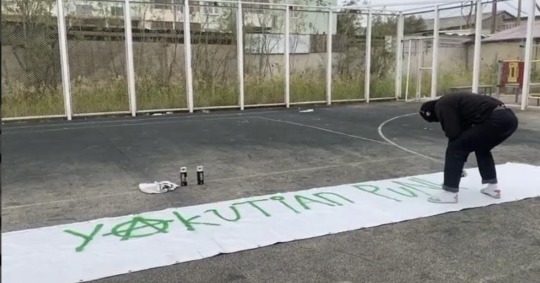
By Anonymous
Anti-war movements in Russia immediately appeared at the onset of Russia’s invasion of Ukraine. Notably, these initiatives were and are by and large driven by preexisting feminist organizations (The Social Democratic Alternative, Eighth Initiative Group, Eve’s Ribs, the Agasshin Project, and the Feminist Translocalities Projectto name a few) and Indigenous and ethnic minority groups founded in direct response to the war. While currently there is no sole, centralized movement uniting the country’s numerous Indigenous Peoples and ethnic minorities, the appearance of various anti-war organizations, media accounts, and content, and action points to a rather unprecedented impetus of collaboration and solidarity focused on condemnation of the Russia state’s actions.
Further unparalleled is the overt and widespread presence of anti-colonialist and anti-imperialist sentiment as activists and laypeople alike criticize Russia’s attack on Ukraine and probe into the federation’s enduring issues of coloniality in quotidian life (racism, discrimination, xenophobia, and the violence they encourage). The invasion of Ukraine is not new or covert; rather, it represents the next steps in a long and ongoing history of Russian colonial understanding of a sovereign Ukrainian nation and distinct Ukrainian culture as a threat needing mitigation. These anti-war, staunchly anti-colonialist, and Indigenous-led initiatives are small in number but increasingly outsized in influence. From the use of native languages in anti-war campaigns to overt castigation of Russian chauvinism, these initiatives point to resistance to both the ongoing war and colonial policy. Their importance cannot be overemphasized since their efforts contribute to a better understanding of, and subsequently, better capacity for dismantling Russian coloniality.
Russia’s claims that it is fighting “neo-Nazis” in Ukraine is a blatant distortion of history, and the irony of this claim is far from lost on many Indigenous Peoples of Russia who grew up in a society steeped in Russian colonialism and who witness growing ethnic Russian nationalism (often abetted by right-wing and neo-Nazi sentiment) on societal and institutional levels (e.g., ethnic Russian nationalism enshrined in the federal constitution since 2020).

Image: Russian ultranationalist march in the "Russia March" in Moscow on Nov 4, 2011. The banner they carry reads "Return Russia to [ethnic] Russians". Yuri Timofeyev for RFE/RL.
Anti-war movements like the Free Buryatia Foundation––the first anti-war initiative started in response to Russia’s invasion of Ukraine and on behalf of an ethnic group––emphasize this paradox and use the current conflict to advocate for a reckoning with historic racism and imperialism within Russia’s own borders. The objective of The Free Buryatia Foundation(Buryats Against the War) is twofold––to fight against the war on Ukraine and to “solve the problem of racism and xenophobia in Russia”. Founder and president of the fund, Alexandra Garmazhapova, says such an organization was needed for a number of reasons: the disproportionate number of Buryat soldiers dying in the war, the overrepresentation in media of Buryats as the main perpetrators of violence, and the latent systemic factors that usher Buryats into military service.
“Our region has been the leader in losses since the very beginning of the war, and it was important for us to declare that we are Buryats, and we are against the war. We consider the war with Ukraine xenophobic, because if Russia had a tolerant society, the idea of ‘denazification’ of Ukraine…would not find support among Russians. The Indigenous Peoples of Russia have been and are being subjected to ‘denazification’, which in reality is complete Russification. We understand what it’s like to have your language and culture banned… Residents of ethnic republics who go to Moscow and St. Petersburg face xenophobia and racism… But at the same time, military personnel from [the ethnic republics] are sent to Ukraine to protect the ‘Russian world’,” Garmazhapova said in an interviewin July.
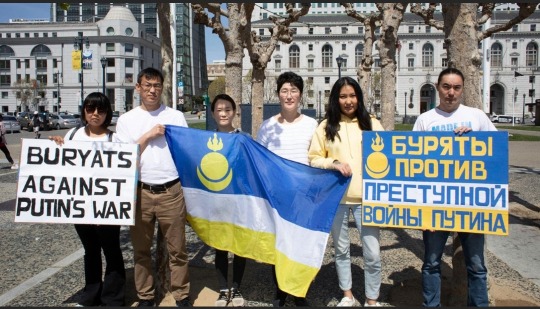
Image: Activists at a rally against the war in Ukraine in San Francisco holding signs that read "Buryats against Putin's [criminal] war" and the flag of Buryatia. Courtesy of Alexandra Garmazhapova's Facebook page.
The Free Buryatia Foundation tracks statistics on losses during the war, provides legal advice to help military personnel terminate their contracts, shares credible information to combat propaganda and misinformation, and strives to prevent Russian servicemen from going to Ukraine. The organization is very active on social media sites and regularly collaborates with specialists, activists, and other anti-war initiatives on live-streamed discussions, data collection and sharing, and crowdsourcing.
Most of the Free Buryatia Foundation’s team resides outside the Russian Federation, which shields them from Russia’s growing restrictive legislation, namely “fake news” laws, which criminalize the dissemination of false information about the Russian army and is used by the state to censor, detain, and imprison those who oppose the war. For that reason, there are no large-scale Indigenous-led anti-war organizations or groups based in Russia. Disparate groups and media accounts exist though they tend to maintain anonymity and much of their activism work is shared or takes place on Instagram (only accessible with use of a VPN) and Telegram. These include, but are not limited to the Sakha Pacifist Association, New Tuva Movement, and Asians of Russia(which existed prior to the war but shifted its focus to information about the war and protests), which share information specific to their respective regions in addition to sharing information among each other.

Image: Symbol of the Sakha Pacifist Association with text reading "An appeal to the residents of the Sakha Republic and the people of the world." Courtesy of https://www.instagram.com/sakha_pacifist_association/

Image: A post from the New Tuva Movement's Instagram page with text reading "Tuvinians against war!" Courtesy of https://www.instagram.com/new_tuva/
Indigenous individuals are actively engaged in anti-war actions though they are targeted by the Russian Federal Security Service and the Center for Combating Extremism (unit in the Ministry of Internal Affairs). The social media pages for various groups often crowdsource funding these activists need for legal aid. While the groups are not organized or affiliated, through their sharing of each other’s posts and through collaborations, they’re forming a kind of network––one that is able to exist under the current Russian state. Through posts on social media are seemingly low-impact, these groups are harnessing social media as a tool to disseminate information restricted by the state and state-run media and building networks on platforms that are relatively accessible.
There is no single position towards the war among Russia’s different Indigenous groups. These groups are often asked how individuals, who carry out demonstrations with signs saying “Tuvinians against the war”, or nameless admins, by using names such as Sakha Pacifist Association or New Tuva Movement, are able to speak for an entire people group. “These action[s] raise the rebellious spirit of the people. [They’re] very important demonstrations and actions for the entire people, as well as a message to the whole world,” wrote sakha_vs_war. The evocation of one’s nationality or cultural background is yet another tool for appealing to the public. The state and regional governments also utilize this tool in their co-opting of national cultures broadly, and of organizations such as the Russian Association of Indigenous Peoples of the North (RAIPON) and the Buddhist Traditional Sangha Center of Russia specifically, in support of hostilities against Ukraine. Identity, language, and culture are effective tools for anti-war movements in this particular case as initiatives consistently underline the imperial nature of this current war.
Given Russia’s history and continuing legacy of colonial language policy inherited from the Russian and Soviet empires (which systematically afforded/s primacy to the Russian language at the expense of native languages), anti-war slogans in Indigenous languagesare part of reclamatory cultural education which is, at its core, anti-war as it is a struggle against colonialism. The struggle around national languages in Russia is inextricably tied to state-sanctioned xenophobia and Russian supremacy. State language policy has become increasingly restrictive on native language education as Putin proclaimed in 2017 that Russian “the natural spiritual framework of the country” and that “everyone should know it”. Then, in 2018 three amendmentswere made to Law No. 273 “On Education in the Russian Federation,” which made Russian language learning compulsory at the expense of native languages. National or republican sovereignty movements of non-Russian, and overwhelmingly Indigenous, ethnic groups are thus intimately intertwined with language and cultural sovereignty, making language and culture significant areas the state and its security forces carefully scrutinize. Therefore, with this context, struggles for regional authority or autonomy and the anti-war struggle are innately linked.

Image: Anti-war poster with text in the Buryat language. By Yumzhana Sui for Agasshin.

Image: Anti-war poster with text in the Tatar language. By Alisa Gorshenina for Agasshin.
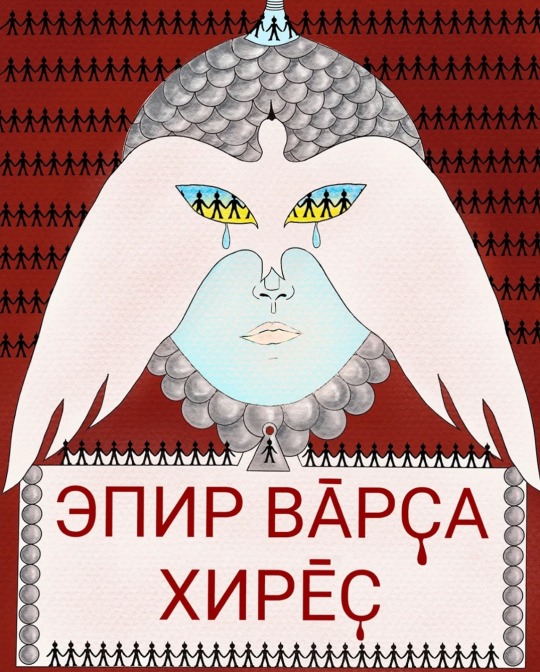
Image: Anti-war poster with text in the Chuvash language. By Polina Osipova for Agasshin.
For many activists, printing and disseminating anti-war messages in Indigenous languagesis not only symbolic of the resistance against the colonial Russian state, but also a rallying call to compatriots who might support the war or who do not openly oppose it. The Agasshin Project published a series of anti-war postersin Indigenous/national languages created by speakers of the languages (Buryat, Kalmyk, Udmurt, Chuvash) since anti-war activities in Indigenous languages “can be instruments of resistance to both the current war and colonial politics”. Aikhal Ammosov, a Sakha musician and activist, has been tried twice and is awaiting a third trialfor his anti-war picketing and performances in Sakha, Russian, and English. Ammosov was first fined for “hooliganism”, then for “discrediting the Russian armed forces”, and he currently awaits trial and could possibly face up to three years in prison for his most recent art performance involving a banner reading “Yakutian Punk Against WAR”.

Video still posted on Ammosov's Instagramaccount in which he spraypaints a banner with the text "Yakutian punk against war."
Following Russia’s February 24, 2022 invasion of Ukraine, activists around the world began publishing texts about colonialism, racism, and violence in Russia with fervor. Though these activists and groups are far from monolithic and cater to regional, historical, and culturally specific needs, these ideas spread and grow horizontally across the sphere of Russian influence, allowing for grassroots collaboration, collectivization, and support to grow.
#indigenous#indigenous russian#culture#indigenous russia#russia#important#colonization#fypシ#fypage#landback#Tuva#Sakha#Yakutia#Baryutia#indigenous people#indigenous resistance#indigenous rights#powerful
232 notes
·
View notes
Text
Pathologic fans! I am calling on you all for something very important. If you have ever researched or referenced Buryat language or culture for your fanworks, or enjoyed someone else having done so, here is something you can do for the real people.
There’s an organization called Free Buryatia Foundation that is against the war in Ukraine and is currently trying to help draft dodgers escape to Mongolia, since Buryatia is one of the most heavily recruited regions. It’s a very poor part of Russia, and many people go into the army out of necessity. Unfortunately, this has led to the world seeing the Buryat people in a negative light because of the unconscionable acts of some of the members of the army. Help those Buryats who don’t want war and don’t want to be killed far from their home in a useless, stupid imperial land grab!
https://freeburyatia.taplink.ws
171 notes
·
View notes
Note
Hi,
I'm not indigenous so you can dismiss this as being overstepping if you want and you'd have every right to as a native person. I was thinking of maybe sending this on anon but anon messages are far easier to be construed as bad faith (I want to stress I'm not sending you this ask to dunk on you or ague with you or something) and also I think it's best to be honest so I'm doing this off anon.
I'll admit I was personally kind of uncomfortable at your Koryak Russia headcanon when I saw it, particularly because of the history regarding the Russian colonisation of Siberia, and especially because you chose the Koryaks in particular. However I am not indigenous so of course my opinion is definitely not one which should be amplified. I just want to give some context on Siberia/the Koryaks which might help explain further why the Koryak anon was upset.
Unlike the USA, Russia was an already established country when it undertook its colonisation of the far East. The indigenous Siberians were never originally "Russian" and had very little to no contact with Russians before the Russians invaded, and, again, Russia was an already established country at that point. The formation of Russia as a nation had nothing to do with engaging with Siberian indigenous, however Russia as we know it today with its huge landmass is a result of the later Russian colonisation of Siberia (Tsardom of Russia established 1547, Russia began its invasion of Siberia in 1580).
I didn't want to say anything because well I'm not a Koryak nor am I am indigenous Siberian nor am I indigenous at all however seeing as a Koryak spoke out, I just wanted to give a little more context of Russia's treatment of Siberian indigenous and Koryaks in particular. Again, I'm not sending this ask to shout at you, I just wanted to give further context.
Russia, as the previous Koryak anon pointed out, has been disproportionately mobilising indigenous Siberians, hence why the "Free Buryatia Foundation" was founded in an attempt to combat this, I've made some posts on this myself, including the recent Russian crack down on Siberian activists in which they've sentenced the leader of Free Buryatia to 7 years in prison.
Indigenous Siberian soldiers in Ukraine have also been frequently scapegoated for Russian war crimes committed in Ukraine, including by the Pope himself,
"The cruelest are perhaps those who are of Russia but are not of the Russian tradition, such as the Chechens, the Buryats and so on,” he said."
https://www.google.com/amp/s/amp.cnn.com/cnn/2022/11/29/europe/pope-francis-chechens-buryats-intl/index.html
Not only do indigenous Siberians face Russification, grapple with the Kremlins mistreatment of them and suffer from disproportionate mobilisation, but they are also being scapegoated for the brunt of Russian war crimes in Ukraine
https://www.media-diversity.org/the-savage-warriors-of-siberia-how-an-ethnic-minority-in-russia-came-to-be-unfairly-blamed-for-the-worst-war-crimes-in-ukraine/
To give some further context on Russia's treatment of the Koryaks in particular, not the full history but:
In the 1930s Koryak children were sent to boarding schools, where they were expected to adopt new ideas, including anti-religious views and criticisms towards their own traditions. This led to the loss of their natural way of life and traditions, with many Koryak settlements forcibly disbanded. In 1954, the teaching of the Koryak language was banned - this lasted for 2 decades. Affluent herders and shamans were executed during Stalins reign.
I can only find one source which says this so take it with a grain of salt , but nuclear testing. Apparently nuclear tests in the 1950s and 1960s caused severe problems for the Koryaks. Radioactive contamination harmed their immune system. Reindeer-herders' bones contain significantly more lead and caesium, resulting in a surge in diseases. Again, I could only find 1 source for this which is why I said "apparently" however regardless of if this factoid in particular is true or false doesn't necessarily take away from Russia's overall mistreatment of them.
On the Koryak infant mortality rate: "Infant mortality is also very high..The highest rates recorded in official statistics are among the Koryak, at 52.6 per 1000" (Peoples of the Arctic: Characteristics of Human Populations Relevant to Pollution Issues)
The average Koryak lifespan at one point was less than 50 years and iirc it's still quite low.
When it comes to their fishing:
"In September 2014, the parliamentary assembly of Kamchatka Krai introduced a bill aimed at reconsidering the management of those territories that have been traditionally used by indigenous peoples. The bill set out a proposal to considerably reduce their area and to prevent indigenous peoples from cultivating the land in the south of the Kamchatka Krai region – a move that deprives many of the ability to maintain traditional livelihoods such as fishing."
https://minorityrights.org/minorities/koryaks/
I'm not trying to point a finger at you because I'm sure you did not have any bad intentions with your post especially because you yourself are native and I'm not so I would be seriously overstepping, and of course it's always amazing to see more indigenous rep and I myself have my own Siberian ocs, but I just wanted to try and give some further context as to why perhaps the Koryak anon was upset at your depiction, however again I'm not indigenous so my opinion on the matter holds a hell of a lot of less weight. You don't have to feel obligated to post this, I know it's a heavy subject, and again I'm not indigenous/native so you could just dismiss this all if you wish. I hope this didn't come across as me overstepping
I truly appreciate your taking the time to message me. I do not mind, as anyone who recognizes something is wrong should say something. Being native does not excuse my choices, so please don't feel bad for correcting me or adding context.
I mentioned my intentions in the anon's ask because I wanted them to know my making Russia Koryaki was not to erase these humanitarian injustices, but to see a character I adore as indigenous. No matter my intentions, I should have known better than to connect an oppressed native culture that I have no connection to, to the literal embodiment of its invader.
Your message is important to me and because you used multiple sources, I do want to share it as it is a great way for more people outside of Russia to know about the plight of Koryak people. To the anon, I altruistically apologize for my depictions.
7 notes
·
View notes
Text
Examining Fyodor Vitin's "Mask" post
This collects various notes written while trying to analyse the post by Vitin from May 26th, 2023, where Vitin showed us the photo of an Executor mask and shared an interesting, but untranslated phrase from the Steppe language.

I wasn't able to arrive at any conclusions that, I think, would be able to move the ARG - to get that out of the way - but I thought to share the gathered material anyways, for anyone interested. Due to its sheer length, the entire thing is under the cut.
The Doomed City
We have since found out that the ARG contains parallels to the novel The Doomed City by Arkady and Boris Strugatsky.
In the book, the main character is Andrei Voronin, an astronomer from Leningrad.
Andrei Voronin was the solution to Zimin's "riddle," where we were required to find out the only person who was authorised by Vitin to speak on his behalf. Someone "A." was the answer.
Back then, we initially assumed Katzman to be the right answer due to 1) Vitin referring to him as "my good friend and colleague" 2) Zimin's initials, A.V., were assumed to make him a parallel to Andrei Voronin, therefore Vitin's friend would be Katzman… presumably? (Turned out to be wrong..)
In the novel, Voronin lives in the titular Doomed City, which is surrounded by a swamp and a desert. Eventually, he and his sceptical friend, Izya (Izia) Katzman lead an expedition to explore the desert. The expedition ends tragically, with Katzman and Voronin being the last survivors; however, they find out that the desert contained many ruins of Earth cultures, showing that this mysterious world of the City is actually very old and was previously inhabited by humans. On the border of the world, Andrei apparently dies by trying to shoot at his double; however, he suddenly returns to Leningrad, where the person who recruited him into this mysterious world tells him that he passed the first circle, but "there are many of them ahead". The themes of a ruined world and potential timeloops seem to be ever-present in Pathologic 2.
Dosoo ba beshē tēēhēē
According to Vitin, this is the name of "a seasonal festival of the central region's steppe people".
This phrase is probably, at least partially, based on Buryat language. (If you speak Buryat, please hit me up!)
I've seen around a lot of people interpreting it as having something to do with the number seven. I wasn't able to find the source of these claims, or figure out the connection. If you know more about what was this theory, let me know!
All meanings of the words are referenced from this dictionary: Burlang.Toli
"Dosoo" might be equivalent to "досоо", which could mean: 1) Insides, internal organs; 2) Soul (metaphorical); 3) Other contextual meanings related to being inside of something
"ba" is probably "ба", which means "and"
"beshē" is used in Pathologic 2 in context of "no," "not," disagreement: 1) from Pathologic Wiki: "Ime beshe (Имэ бэшэ) — it's not that, it's not like that"; 2) From conversations with Taya Tycheek:
Taya: I'll be the Mistress of Bulls.
Haruspex: How about "Mistress of the Kin," instead?
Taya: Beshe, beshe… And who will you be?
"beshē" is also, of course, similar to the word "бэшэ" from Buryat, which means: 1) Other, different, the rest. Example: "бэшэ нүхэдшни хаанаб?" - "where are your other friends?"; 2) A grammatical particle reverting the meaning of a word or a sentence, usually in context of two things opposing each other. Example: "Мэдээжэ ба мэдээжэ бэшэ" - "Known and unknown"
"tēēhēē" is a tough one, as I haven't been able to find any transliteration that would get me anything out of the Buryat dictionary, and this word has seemingly never been spoken in Pathologic 1 or 2. Most similar I've found were "тэхэ" - a goat; "тиихэ", same as "тиигэхэ", which is a default form of a word with many meanings, related to "to do something the implied way": for example, has such forms as "тиигүүжэм" - "I will do something in this way"; "тиигэ" - "Do it, let's do it", expressing agreement; "нүхэр болохоёо тиигэнэ гүш?" - "You wish to become a friend?"
A crude translation then could either be: "inside and other tēēhēē" (meaning or related to inside and outside???); or, "Inside and not (tēēhēē)" (or non-tēēhēē, un-tēēhēē etc). The second option is closer to the usage of "бэшэ" in Pathologic, however, in the real Buryat, the grammatical particle "бэшэ" only has the "reverse the meaning of the word next to it" effect when the word it reverses is before бэшэ (ex.: "мэдээжэ" - known, "мэдээжэ бэшэ" - unknown). This could potentially (highlighting doubt in this theory) mean that in the Pathologic's Steppe Language, "бэшэ" cancels the word after it, unlike in Buryat. However, the known Steppe phrase "Ime beshe", meaning "it's not that", in my opinion contradicts this conclusion..? (Ime or имэ is not a real Buryat word, as far as I can tell.)
Interesting but unrelated example from Buryat language: "муу бэшэ" - "not bad, satisfying", бэшэ here reversing the meaning of муу, as per one of the meanings of that word listed in the paragraph above.
And now, for a smoother transition into the next part, let's also examine the Wicked Bird mentioned in the same post, Muu Shubuun: "муу" (muu) is the Buryat word for bad, evil, wicked; "шубуу(н)" means a bird or related to birds. Literally, the bad bird.
The Wicked Bird and Suok
We don't actually get a lot of information about Muu Shubuun from Patho2, the most extensive mention of it being this exchange between Mark Immortel and Artemy Burakh:
Immortell: We have a ton of steppe theatre costumes in the storeroom. Especially those wicked birds, Muu Shubuun. The ones that symbolize death. Do steppe people like the play with death?
Haruspex: Muu Shubuun is not a mask of death. It's actually more about life.
The meaning of that isn't clear - an executor, wearing the Muu Shubuun mask, appears in the Marble Nest frequently, trying to convince the Bachelor to accept death.
Muu Shubuun is not mentioned in Pathologic 1.
In Pathologic 2, "types" of Townsfolk are named after various birds: Crows, Nightjars, Pigeons, Doves, Finches, Geese etc.
Back to Vitin's "Mask" post:
Inside was a massive bone mask in the shape of a bird's skull. This particular fétiche was probably carved in the likeness of Muu Shubuun, the Wicked Bird. The first known mention of it is associated with the dosoo ba beshē tēēhēē, a seasonal festival of the central region's steppe people. The image itself is presumed to be much older, tracing back to one of the oldest creation myths.
So the festival, the name of which we've tried to piece together, could potentially be related to the Baur Meges, the Steppe religion's world-creation legend.
Per Baur Meges, Bos Turokh has existed before the universe did, but at some point, Suok, the personifiction of evil, has appeared up from abyss, "filling the world with herself." She devoured all the stars and the light, for which Bos Turokh has devoured her. Since then, Suok remains to be inside Bos Turokh, "trying in vain to consume him from within his tight embrace." This event has also led to the creation of the Universe, Wheel (so that all be destined to return to the beginning), Law (to shut Suok to eternal imprisoment?), Fear (to exgorge his pain), and Time.
We don't really know of Muu Shubuun's place in Baur Meges and other Steppe mythology. We could assume the Shubuun, or an "older" version of it, is somehow related to one of the two characters in Baur Meges, in which case it's likely to be Suok, the evil.
Suok is also associated with the Sand Pest, and the other way around: the Sand Pest is treated as a living creature.
The Sand Pest manifests as a person in the theatre's Muu Shubuuk costume.
Although the specifics of the Steppe mythology on the topic aren't known, either way, we can conclude there is a rather strong connection between Muu Shubuuk and Suok.
Tying everything together
Per Baur Meges, Suok is now entrapped inside the World Bull. I suspect the name of the festival includes the word with the meaning of or related to "inside": "dosoo".
Muu Shubuun(?) / Executor / Beakhead speaks to the Bachelor at the conclusion of each day in The Marble Nest. The Bachelor is famously trapped in a loop, potentially not unlikely Andrei Voronin from The Doomed City.
At the same time, one Mr. Katzman has recently returned from an expedition, drawing an another parallel to the events of The Doomed City. This might imply that Pathologic's Katzman has avoided entering any sort of a time/narrative loop?, but an another character might've moved on to the next "circle".
A., in reference to Andrei Voronin, is the "correct" ARG player's name, to which Zimin had responded in ways that advanced the plot. What does this mean that the player is associated with someone entering time loops, while also playing through time loops in The Marble Nest?
Further research can be done into:
Connections of bird-named Townsfolk, Muu Shubuun, Suok, the Plague;
The role of the "Mentor", the person who has recruited Andrei Voronin into the mysterious world of The Doomed City, and parallels with Muu Shubuun? (Have not read the full text of the book tbh.)
Examining Suok's role, looking for potential meanings of "Dosoo ba beshē tēēhēē" festival in Herb Bribes' actions and dialogue due to their connection to Suok.
"Muu Shubuun is not a mask of death. It's actually more about life." Why?
Feedback greatly appreciated. It doesn't seem like we're getting a lot of actual progress from the ARG now, but at least the crumbs of lore still seem to be there. :]
7 notes
·
View notes
Text
the pathologic Kin is largely fictionalized with a created language that takes from multiple sources to be its own, a cosmogony & spirituality that does not correlate to the faiths (mostly Tengrist & Buddhist) practiced by the peoples it takes inspirations from, has customs, mores and roles invented for the purposes of the game, and even just a style of dress that does not resemble any of these peoples', but it is fascinating looking into specifically to me the sigils and see where they come from... watch this:
P2 Layers glyphs take from the mongolian script:

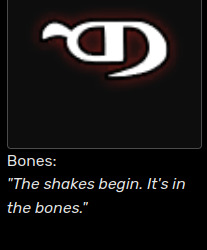

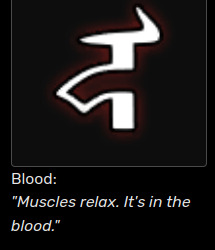

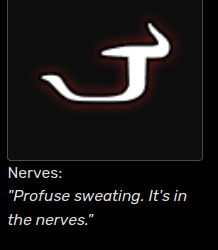


while the in-game words for Blood, Bones and Nerves are mongolian directly, it is interesting to note that their glyphs do not have a phonetic affiliation to the words (ex. the "Yas" layer of Bones having for glyph the equivalent of the letter F, the "Medrel" layer of Nerves having a glyph the equivalent of the letter È,...)
the leatherworks on the Kayura models', with their uses of angles and extending lines, remind me of the Phags Pa Script (used for Tibetan, Mongolian, Chineses, Uyghur language, and others)


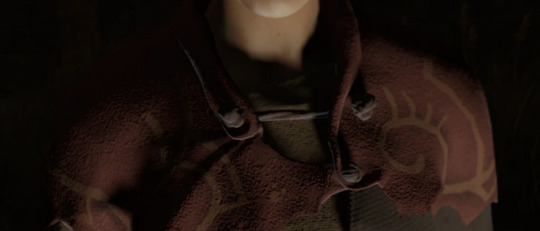
some of the sigils also look either in part or fully inspired by Phags Pa script letters...






some look closer to the mongolian or vagindra (buryat) script

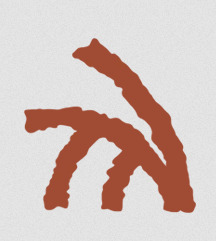
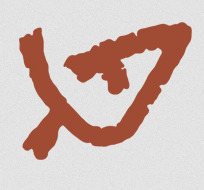

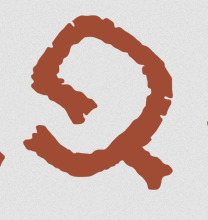
looking at the Herb Brides & their concept art, we can see bodypainting that looks like vertical buryat or mongolian script (oh hi (crossed out: Mark) Phags Pa script):
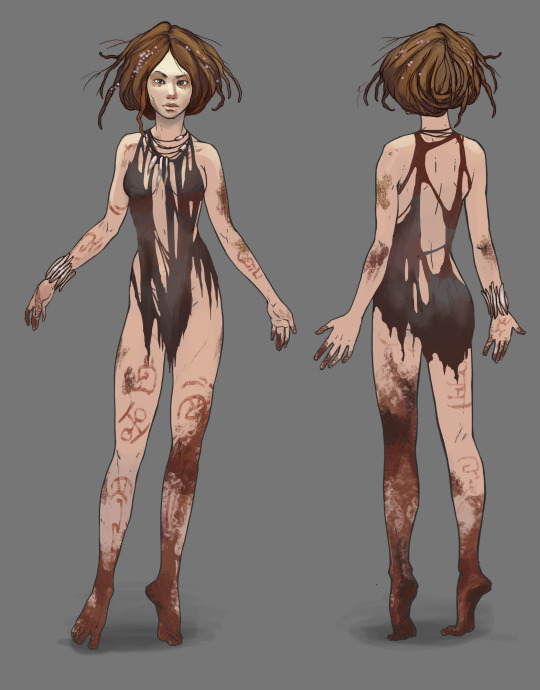
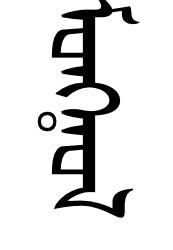
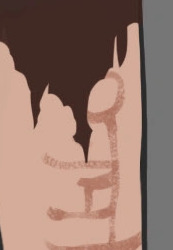
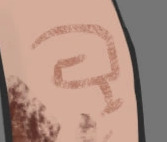

shaped and reshaped...
#not sure how much. what's the word. bond? involvement? not experience. closeness? anyone in the team has with any of these cultures#but i recall learning lead writer is indigenous in some way & heavily self-inserts as artemy [like. That's His Face used for#the p1 burakh portrait] so i imagine There Is some knowledge; if not first-hand at least in some other way#& i'm not in the team so i don't know how much Whatever is put into Anything#[ + i've ranted about the treatment of the brides Enough. enough i have]#so i don't have any ground to stand on wrt how i would feel about how these cultures are handled to make the Kin somewhat-hodgepodge.#there is recognizing it is Obviously inspired by real-life cultures [with the words;the alphabet;i look at Kayura i know what i see]#& recognizing it Also is. obviously and greatly imagined. not that weird for you know. a story.#like there is No Turkic/Altaic/Mongolic culture that has a caste of all-women spiritual dancers who place a great importance on nudity#as a reflection of the perfect world and do nothing but dance to bring about the harvest. ykwim...#like neither the Mongols nor the Buryats nor the Tibetans dress the way the Kin does. that's cos the Kin is invented. but they're invented.#.. on wide fundations. ykwim......#Tengrism has a Sky Deity (Tengri) with an earth-goddess *daughter* whereas the kin worship an Earth-Goddess mother of everything#+ a huge bull. Buddhism has its own complete cosmogony & beliefs which from the little I know Vastly Differ from anything the Kin believes#like. yeah. story. but also. [holds myself back from renting about the Brides again] shhh...#neigh (blabbers)#pathologic#pathologic 2
284 notes
·
View notes
Text
In late December, Alexey Tsydenov, the governor of Russia’s Republic of Buryatia, created a brand-new agency aimed at preventing “separatism and nationalism” in the region. While the office is the first of its kind in Buryatia’s modern history, it’s not unprecedented: the Soviet authorities took measures to combat potential Buryat separatist movements in the 1930s, referring to these efforts as the “fight against pan-Mongolism.” In reality, there was no “pan-Mongol conspiracy” during the Stalin era, and the regime’s search for one led to mass repressions. Less than a generation earlier, however, there had been three real attempts to secure greater autonomy for the Buryat people. The outlet People of Baikal recently looked back at this rarely-discussed history. Meduza shares an English-language adaption of the article.
3 notes
·
View notes
Text
EAST ASIAN RESOURCES
The Anthropological Masterlist is HERE.
East Asia is an Asian region on the eastern side of the Asian continent.
AINU ─ “The Ainu people are a Northern Asian people. They are native to Hokkaido island and the Kuril islands.”
─ Ainu Culture
─ Ainu Culture
─ Ainu Dictionary
BURYAT ─ “The Buryat are a Mongolian people. They are native to the Republic of Buryatia in Russia.”
─ Buryat Dictionary (in Russian)
CHINA ─ “The Chinese, or Huaren, people are an East Asian people that share the Chinese culture. They are native to China.”
─ Chinese Mythology
─ Chinese History
─ Chinese Dynasties
JAPAN ─ “The Japanese people are an East Asian people that share the Japanese culture. They are native to Japan.”
─ Japanese Information
─ Japanese Language
─ Japanese Calligraphy
KOREA ─ “The Korean people are an East Asian people. They are native to the Korean Peninsula.”
─ Korean Customs
─ Korean History
─ Korean Language
MACAU ─ “The Macau people refers to anyone that is from Macau. Those of Portuguese descent are referred to as ‘Macanese.’”
─ Macau Information
MANCHU ─ “The Manchu people are a Tungusic people. They are native to China.”
─ Manchu History
─ Manchu Language
MONGOLIA ─ “The Mongolian, or Mongol, people are an East Asian people. They are native to Mongolia, Inner Mongolia, and the Buryatia Republic.”
─ Mongolian Art
─ Mongolian Texts (in German)
─ Mongolian History
RYUKYU ISLANDS ─ “The Ryukyuan, or Loochooan, people are an East Asian people. They are native to the Ryukyu Islands, between the Kyushu island of Japan and Taiwan.”
─ Okinawan Folktales (in Japanese)
─ Ryukyuan History
─ Ryukyuan Languages
SHINTO ─ “Shinto, or Shintoism, is an East Asian religion. It originated in Japan.”
─ Shinto Information
─ The Kojiki
─ The Nihon Shoki
78 notes
·
View notes
Text
About me
Age: I'm between 16 or 18 (人*´∀`)。*゚+
Gender: yes
Pronounce: he/ her/ them
Sexuality: pansexual
MBTI: INFJ!!
Zodiac sign: Leo ♌
Country: Russia!
Language i speak:
English
Russian
Ukrainian
Bashkir
Tartar
Buryat
Chuvas
Armenian
Avar
Belarusian
Ingush
Komi
Kalmyk
Bulgarian
Estonian
Kabardian
Karelian
Mari
Osstian
Tagalog
Favorite color: green
Fandom I'm in: i forgot
Favorite food: potatoes
Favorite animal: owl
Yeah i guess thats it
Masterlist | about me | rules
2 notes
·
View notes
Note
(sending this ask because I think this might be of interest to you or your followers but I don't want to put it on my blog for privacy reasons)
I saw the post you reblogged with the discussion of ethnic minorities in the USSR. Most of my family is from various ethnic minority groups in russia and the former soviet union, so I would like to share some things I've heard regarding this.
My father (who is from buryatia, an autonomous republic which is geographically pretty remote and historically less developed, one of the poorest areas of russia/ussr) is not even a leftist, but he said the soviet govt really helped with developing infrastructure, healthcare, education, etc. You could choose to go to a russian or buryat school (which would be the language the classes are taught in). The Soviet educational system was designed to encourage people from poor or minority backgrounds to continue in their education. They were also allowed to practise their religion, There was a general sentiment of gratitude towards the govt, especially among the older generation (though this was true of the majority ethnic russian population in russia too, since they either personally experienced the times before or knew those who did). The reason their language is endangered is because people are moving away to places with more economic opportunity, not because they were not being taught. Of course it's not good for cultures/languages to die out, but it's not fair to blame the so-called "evil commies" for this.
There was discrimination against some ethnic minorities in the USSR. For example, Jewish people were heavily discriminated against in academia. Discrimination against some ethnic groups such as Tatars led to opposition against the Soviet government, and resentment that lasts to this day. I think this was something not commendable in the USSR, and socialists should seek to learn from these mistakes (of which there were many) and not repeat them, and also learn from successes in promoting minority cultures in the USSR, of which there were many as well. Policy also varied a lot depending on the time period, so it's hard to say anything for the soviet union in the entirety of its history. All I can do is share what I know as an ethnic minority Russian myself. In short, I think the mistakes of the USSR should be acknowledged and criticised, but the way some people (liberals, especially) spread incorrect information is not good and not productive.
(Note: I strongly oppose the current government of Russia, which is a capitalist mafia state, and Putin's war on Ukraine. The point of this ask is to share things about the history of ethnic minorities in the USSR, not to oppose people opposing Putin, if that makes sense.)
I have a lot more to say on this topic, but this is getting long as it is. also sorry if my english is bad, I tried my best and I hope it was coherent enough.
-
#just posting this since it's functionally a complete post already -#and i dont really have anything substantive to say in response
92 notes
·
View notes